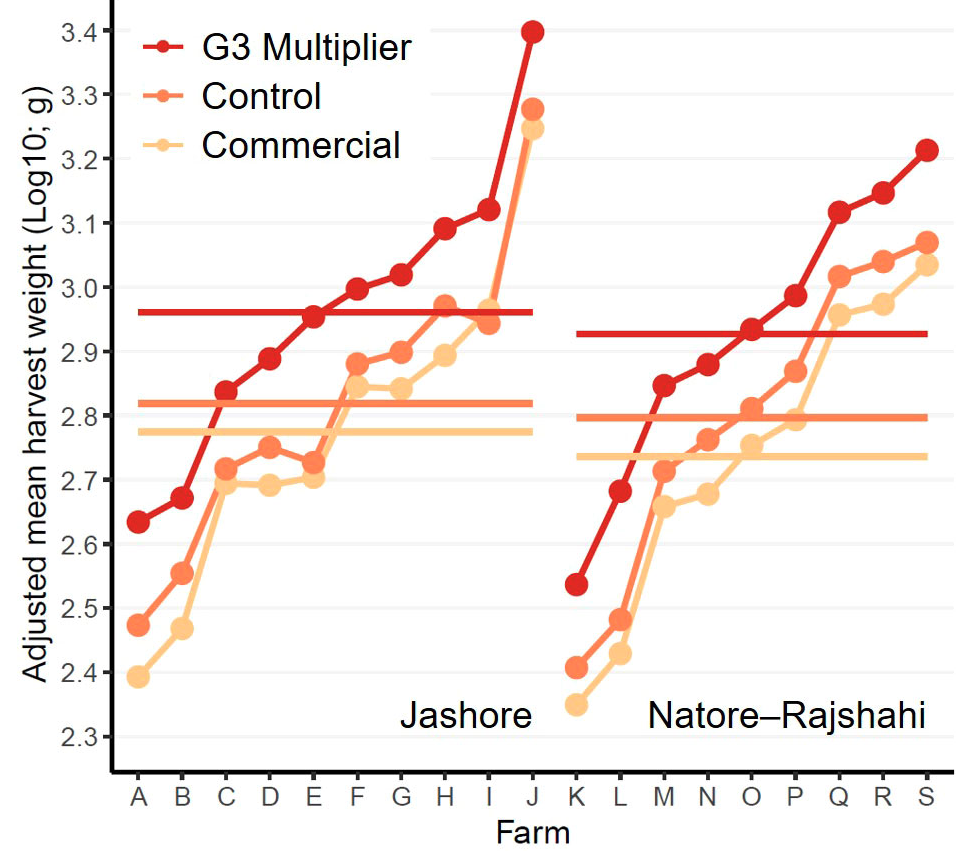
Authors: Hamilton, M., Yeasin, M., Alam, M., Ali, M., Fakhruddin, M., Islam, M., Barman, B., Shikuku, K., Shelley, C., Rossignoli, C., and Benzie, J.
Introduction: Rohu (Labeo rohita Hamilton) is a globally significant aquaculture species for which genetically improved strains are increasingly available. In 2020, a multiplier population, comprised of highly–ranked generation-three (G3) families from the WorldFish Rohu Genetic Improvement Program, was released to hatcheries in Bangladesh for development into broodstock.
Methods: To estimate realised genetic gain for harvest weight in the G3-multiplier population, one pond from each of 19 Bangladeshi semi-commercial farms (ten in Jashore and nine in Natore–Rajshahi districts) were stocked with equal numbers of tagged fish from each of three strains. Strains included in the study were the ‘G3-multiplier’ released to hatcheries, a ‘control’ (putatively genetically equivalent to the unimproved base population which was spawned from fish of river origin) and fish sourced from a ‘commercial’ hatchery. Once stocked, fish were managed according to each farmer’s normal practices.
Results: The G3-multiplier was found to be the most rapidly growing strain. Back-transformed means for harvest weight across farms for the commercial, control and G3-multiplier strains were 594 g, 659 g and 914 g, respectively, in Jashore, and 545 g, 626 g and 845 g in Natore–Rajshahi.
Discussion: These results equate to realised genetic gains of 38.6% (Jashore) and 34.9% (Natore–Rajshahi) for the G3-multiplier over the control strain and provide evidence that a family-based (i.e. pedigree-based) approach to genetic improvement is able to generate substantial levels of genetic gain in rohu. Furthermore, the clear growth advantages exhibited by the G3-multiplier strain over the control and commercial strains in this study, should encourage more Bangladeshi hatcheries, nurseries and farmers to adopt genetically improved rohu.
Read the full publication at https://doi.org/10.3389/faquc.2022.1060335.
Published January 4, 2023

